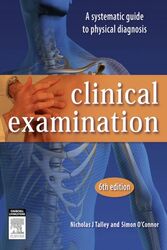「重要なお知らせ:日本語書籍をご購入いただき、eLibraryをご利用の皆さまへ」
エルゼビアは、より快適にサービスをご利用いただくため、システムの重要なアップデートを実施いたします。
現在、新サイト、eBooks+への移行が進められています。
新規ユーザー登録および書籍の登録はElsevier eLibraryでは停止しております。
12月15日以降に
こちらよりご利用・ご登録ください。
Book Description
Please note that this eBook does not include the DVD accompaniment. If you would like to have access to the DVD content, please purchase the print copy of this title.
The sixth edition of Clinical Examination continues to serve all medical trainees with a clear explanation of history taking and clinical examination. Set out systematically, this best selling textbook has comprehensive coverage of the skills necessary for clinically evaluating patients. Thoroughly evidence based and referenced, in full colour with superior artwork and design, the book comes with free and complete access to Student Consult.
- Student Consult - full online access
- full colour with superior artwork and design
- evidence-based
- Coverage of ENT and Ophthalmology
- Expanded history taking sections with new differential diagnosis tables
- More anatomy content and illustrations
- Expanded evidence based medicine references - the only physical examination trainees book with detailed references; new section on inter-observer variability and kappa values
- New material on DVD includes OSCEs, ECGs and an imaging library.
The book is written for the clinical skills subject of the medical curriculum. Medical schools teach this at varying stages, some introducing the subject in the beginning years (graduate medical schools years 1 & 2) and others at year 3 (traditional/hybrid curricula, usually 5 or 6 years). Specialty Colleges and RACP teach a clinical skills subject in the early part of basic training which takes place after PGY1 & 2.


 (0 rating)
(0 rating) 




